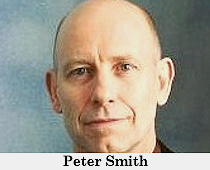Those placards in New York proclaiming that the Occupy Wall Street demonstrators are part of the 99% are meant, I suppose, to demonise the 1%.
According to estimates by Professor Edward Wolff (who does a lot of work in this area), 1% of Americans owned around 35% of US wealth in 2007; a little less than in 1922. The more things change, the more they stay the same.
A more dramatic figure can be got by looking at the top 20%. They own 85% of the wealth and 93% if the family home is excluded. But maybe being part of the 80% does not have the same ring to it as the 99%. Leaving this aside, I dare say, among the mixed and confused messages of the demonstrators, there would be unanimity for greater equality; for sharing the wealth around. They all suffer from the threatening and dangerous malady of money illusion.
Money illusion is mistaking money for physical assets and goods. Money in this context stands for any bit of paper or register or electronic record which claims that its holder or beneficiary owns something or is owed something.  So it can refer to currency notes and coin, bank deposits, property titles, stocks and bonds. Physical assets and goods are infrastructure, residential and commercial buildings, factories, mines, machinery, and the vast array of consumer goods from luxury yachts to cars to iPods to bananas.
So it can refer to currency notes and coin, bank deposits, property titles, stocks and bonds. Physical assets and goods are infrastructure, residential and commercial buildings, factories, mines, machinery, and the vast array of consumer goods from luxury yachts to cars to iPods to bananas.
Money illusion is rampant. In fact, I sometimes suffer from the delusion that I am the only person left in the world who understands the difference between bits of paper, registers and records, which can be produced at will, with no effort to speak of, and physical assets and goods which require a whole heap of effort to produce. Certainly President Obama, Warren Buffett, Bill Gates, Harry Belafonte and Sean Penn, to name just five notables, appear to have no idea of the difference. Adam Smith knew the difference. Unfortunately, the economics profession, the custodian of Smith’s legacy, has regressed to a more primitive state of knowledge; at least in the public domain, so far as I can tell.
Even conservative economists when confronted by the skewed distribution of wealth say things like; well it is a by-product of success which has benefited many people along the way by generating employment and by producing things that people want. All true. But it is only part of the story and it does little to dispel money illusion. And the most important public service of the economics profession, which it has singularly failed to discharge, is to dispel money illusion. Left unchecked, money illusion can lead to government profligacy, to social unrest, to insurrection and revolution, and to communism.
The populace has a natural tendency to suffer from money illusion. Mobs, like the Wall Street demonstrators and their copy cats, are besotted by it. All that money in the hands of the rich; If only it were spread around we could all be a bit rich too. They (the rich) are the reason we are not rich, because they won’t share. It is all superficially beguiling. If only it were true; even I might be a revolutionary and camp outside parliament house in Canberra with my placard (in the summer months). It is, however, too good to be true.
Take at random some multi-millionaires/billionaires. What do they do with all that money? They spend a small proportion of it on luxuries. This is annoying for some envious types; uplifting for others who get vicarious pleasure from knowing that at least some people are frolicking on yachts in the Adriatic, even if they’re not. For the most part, the rich save their money and invest it in stocks and bonds. This underpins the construction of buildings, factories, mines and machines which, in turn, generate goods for consumption. Progressively this engenders economic growth and widespread prosperity.
Now let’s share the money around as the mob demands. Well the existing physical assets can’t be spread much more thinly. Houses, factories, mines and machines can’t be divvied-up very easily; and, after all, what can you do with half a square metre of factory floor. The existing stock of yachts, cars and iPods are already spread about. What will happen?
What will happen is that investing for the future will stop in order to make more houses, yachts, cars and iPods for the present. The physical capital stock, which needs constant renewal, fuelled by the savings of the rich, will run down. Goods will become shoddier and in short supply. Queues will form. Economic growth will stall and start falling backwards. Misery and despotism will take the place of hope and democracy. We know all this or should do. Eastern Europe provides a recent case study.
Spreading the money makes not one additional physical thing. Yet the illusion persists and fuels dissent and worse. The Wall Street demonstrators are seriously misguided. It would be unfair to call them fools. They have been ill-served by the level of public debate and by shortcomings of economists who should have better informed that debate.
In capitalist economies, the rich mainly become rich as a by-product of directly or indirectly employing people and making things people want. But that is just the first half of the important and valuable service they give to society. The second is that they save. Their savings underpin investment, growth and prosperity and provide the scope to relieve poverty.
We need placards saying thank you rich people (excluding government-sponsored crony capitalists and Michael Moore) even if it sticks in our envious craws.
 Sign In
Sign In 0 Items (
0 Items ( Search
Search








